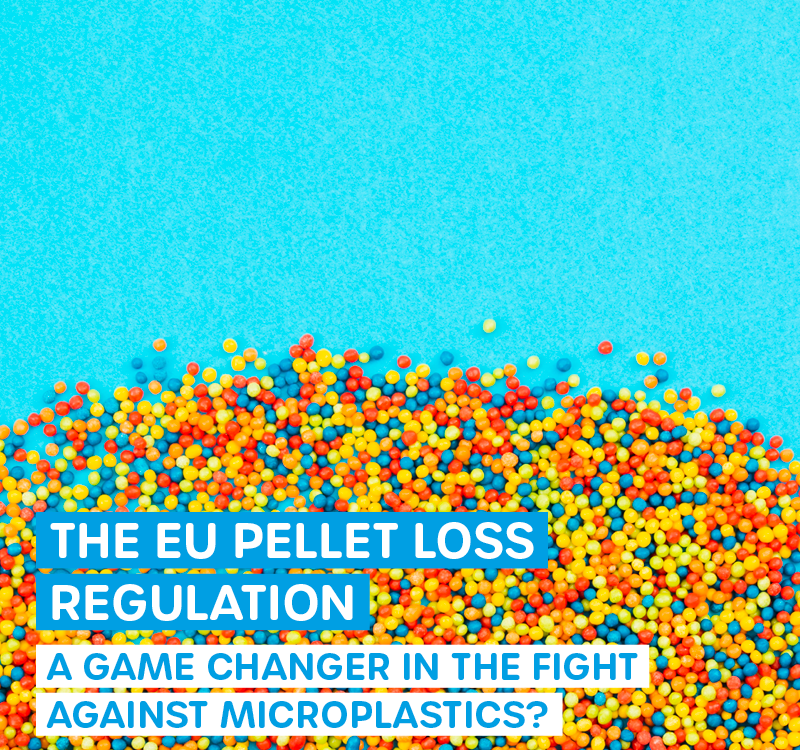
Nanoplastics: The Invisible Threat
Nanoplastics—tiny plastic particles in the nanometer range—represent a new dimension of environmental pollution. While microplastics are already being intensively researched, even smaller particles are now moving into the focus of scientific attention. These ultra-small fragments can penetrate biological membranes and potentially pose a far greater health risk than previously assumed.
Note: This knowledge page is based on current scientific findings (as of November 2025). Research on nanoplastics is developing rapidly. All cited sources are peer-reviewed scientific publications.
What are Nanoplastics?
Nanoplastics are defined as plastic particles smaller than 1 micrometer (μm). Depending on the scientific definition, nanoplastic particles are classified in a size range from 1 nanometer (nm) to 1 micrometer (1,000 nm). Some definitions set the upper limit at a maximum of 100 nanometers, similar to the definition of nanomaterials in other fields.
These drastic size differences between nano- and microplastics have far-reaching consequences: Nanoplastics can penetrate biological membranes and are toxicologically more active than microplastics due to their smaller size and penetrative physical properties.
The Difference to Microplastics
- Microplastics: Plastic particles between 1 micrometer (μm) and 5 millimeters (mm)
- Nanoplastics: Plastic particles smaller than 1 micrometer (μm), typically in the range of 1-1000 nanometers
The bioavailability of 50 nm polystyrene nanoparticles is ten to a hundred times higher than that of microplastics. A single microplastic particle can break down into billions of nanoplastic particles, indicating that nanoplastic pollution will globally prevail.

Sources and Formation of Nanoplastics
Primary Sources:
- Direct Release from Products: Water-based paints, coatings, adhesives, biomedical products
- Abrasion from synthetic textiles and tires
- Cosmetics and personal care products
Secondary Sources:
- Fragmentation of larger plastic particles due to UV radiation, mechanical stress, and biological processes
- Decomposition of microplastics due to environmental influences
Studies show that even organisms like Antarctic krill can convert microplastics into nanoplastics through digestive fragmentation.
Occurrence and Concentrations
Environment:
- Nanoplastics have been detected worldwide in air, seawater, snow, and soil
- Quantitative analyses show nanoplastic concentrations between 0.04 and 1.17 μg/L in environmental and drinking water samples
- The predominant polymer components are polyethylene, polyethylene terephthalate, polypropylene, and polystyrene
Drinking Water:
- In bottled water, concentrations of about 240,000 ± 130,000 particles per liter were estimated, with about 90% being nanoplastics – orders of magnitude higher than microplastics
Human Body:
- Studies in recent years have found nanoplastics in human blood, liver and lung cells, as well as in reproductive tissues such as the placenta and testes
- Microplastics have been detected in human feces, indicating exposure through the food chain
Uptake Pathways into the Human Body
Ingestion (Food Intake):
- Contaminated food, especially seafood and fish
- Drinking water, particularly from plastic bottles
- Abrasion from plastic packaging
- Particles < 150 μm can be absorbed through the intestinal mucosa and enter the lymphatic system
Inhalation (Breathing):
- Nanoplastics in air, especially in urban areas
- Particles < 1.1 μm can be absorbed into the bloodstream via the lungs
Dermal Exposure (Skin Contact):
- Cosmetics and personal care products
- Synthetic clothing
Critical Sizes for Translocation:
- Particles < 110 μm can enter the bloodstream via the portal vein
- Particles < 20 μm can be transported into internal organs
- Particles < 100 nm can even be transported into the brain, reproductive organs, and across the placental barrier into the fetus
Health Risks and Toxic Effects
Scientific investigations have identified diverse health-damaging effects of nanoplastics:
Cellular and Molecular Effects:
- Oxidative stress and ROS overproduction (reactive oxygen species)
- Inflammatory reactions and immune system dysfunction
- Apoptosis (programmed cell death) and genotoxicity
- DNA damage and potential carcinogenicity
Systemic Health Effects:
- Metabolic disorders: Impairment of glucose homeostasis, insulin resistance, diabetes pathogenesis
- Neurological effects: Neurotoxicity, neuroinflammation, protein aggregation, impairment of cognitive functions
- Respiratory disorders: Lung cancer, asthma, hypersensitivity pneumonitis
- Gastrointestinal effects: Inflammatory bowel diseases, disruption of gut microbiota
- Cardiovascular effects: Impairment of blood clotting, cardiotoxicity
- Reproductive toxicity: Damage to reproductive tissues, transgenerational toxicity
Special Risk Factors:
- The smaller the particles, the higher the uptake probability and toxicity
- Nanoplastics can serve as a transport vector for other pollutants (heavy metals, POPs, PFAS)
- Additives in plastics (plasticizers, flame retardants) can have additional toxic effects
Analytical Challenges and Detection Methods
Die Detektion von Nanoplastik stellt die analytische Chemie vor fundamentale Herausforderungen, da etablierte Methoden an ihre physikalischen Grenzen stoßen.
Im Blogbeitrag finden Sie mehr Informationen zu den Limitationen etablierter spektroskopischer Methoden und den Chancen neuer Ansätze.
Research Gaps and Future Perspectives
Current Knowledge Gaps:
- Missing dose-response relationships and long-term health consequences
- Insufficient characterization of molecular mechanisms
- Lack of comparability between studies due to non-standardized methods
- Limited data on real environmental concentrations and various polymer types
Future Developments:
- Integration of various analytical techniques for comprehensive detection
- Development of portable, on-site analysis tools
- Establishment of standardized protocols and reference materials
- AI-supported classification algorithms for automated detection
- Comprehensive human epidemiological studies
Recommendations for Action and Prevention Measures
Individual Measures:
- Avoid single-use plastics and plastic packaging
- Use glass bottles instead of plastic bottles for drinking water
- Reduction of synthetic textiles and use of natural fibers
- Conscious selection of microplastic-free cosmetic and personal care products
Political and Regulatory Measures:
- Ban on intentionally added microplastics in consumer products
- Stricter regulation of the plastics industry at the source
- Promotion of circular economy and plastic-free alternatives
- Introduction of extended producer responsibility
Research and Monitoring:
- Mandatory monitoring of nanoplastic pollution in various environmental compartments
- Funding and promotion of nanoplastic research
- Development of standardized analytical methods
- Education and sensitization of the public








